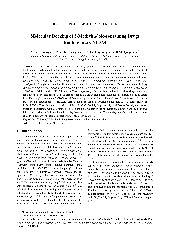摘要
Drugs SPD-304(6,7-dimethyl-3-{[methyl-(2- {methyl-[1-(3-trifluoromethyl-phenyl)-1H-indol-3-ylmethyl]-amino}-ethyl)-amino]-methyl}-chromen-4-one) and zafirlukast contain a common structural element of 3-substituted indole moiety which closely relates to a dehydrogenated reaction catalyzed by cytochrome P450s(CYPs). It was reported that the dehydrogenation can produce a reactive electrophilic intermediate which cause toxicities and inactivate CYPs. Drug L-745,870(3-{[4-(4-chlorophenyl)piperazin-1-yl]-methyl}-1H-pyrrolo-2,3-beta-pyridine) might have similar effect since it contains the same structural element. We used molecular docking approach combined with molecular dynamics(MD) simulation to model three-dimensional(3D) complex structures of SPD-304, zafirlukast and L-745,870 into CYP3A4, respectively. The results show that these three drugs can stably bind into the active site and the 3-methylene carbons of the drugs keep a reasonable reactive distance from the heme iron. The complex structure of SPD-304-CYP3A4 is in agreement with experimental data. For zafirlukast, the calculation results indicate that 3-methylene carbon might be the dehydrogenation reaction site. Docking model of L-745,870-CYP3A4 shows a potential possibility of L-745,870 dehydrogenated by CYP3A4 at 3-methylene carbon which is in agreement with experiment in vivo. In addition, residues in the phenylalanine cluster as well as S119 and R212 play a critical role in the ligands binding based on our calculations. The docking models could provide some clues to understand the metabolic mechanism of the drugs by CYP3A4.
- 出版日期2012-1-25
- 单位吉林大学
